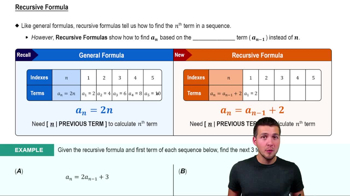48. Integral of sec³x Use integration by parts to show that:
∫ sec³x dx = (1/2) secx tanx + (1/2) ∫ secx dx
 Verified step by step guidance
Verified step by step guidance Verified video answer for a similar problem:
Verified video answer for a similar problem:



 8:30m
8:30mMaster Introduction to Integration by Parts with a bite sized video explanation from Patrick
Start learning